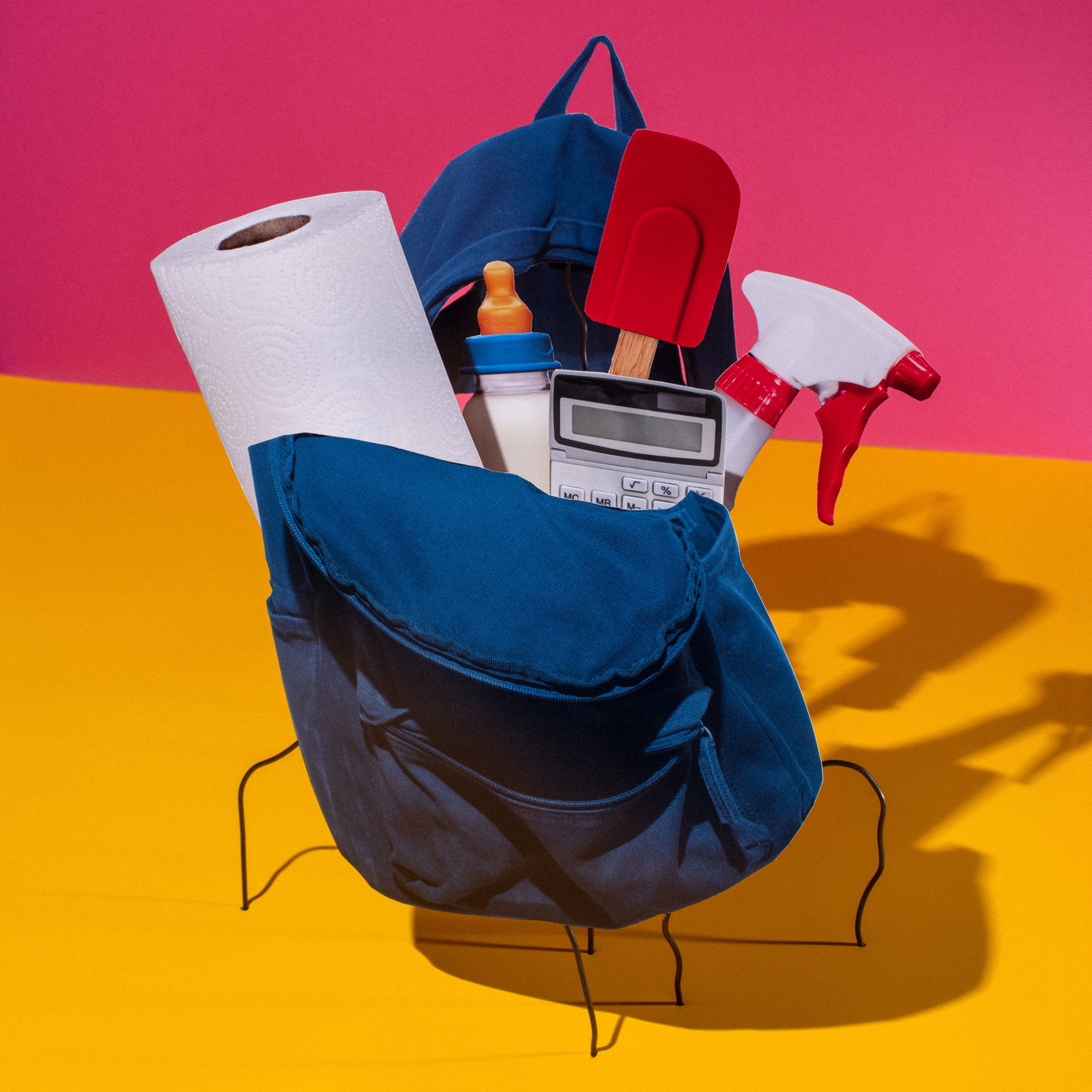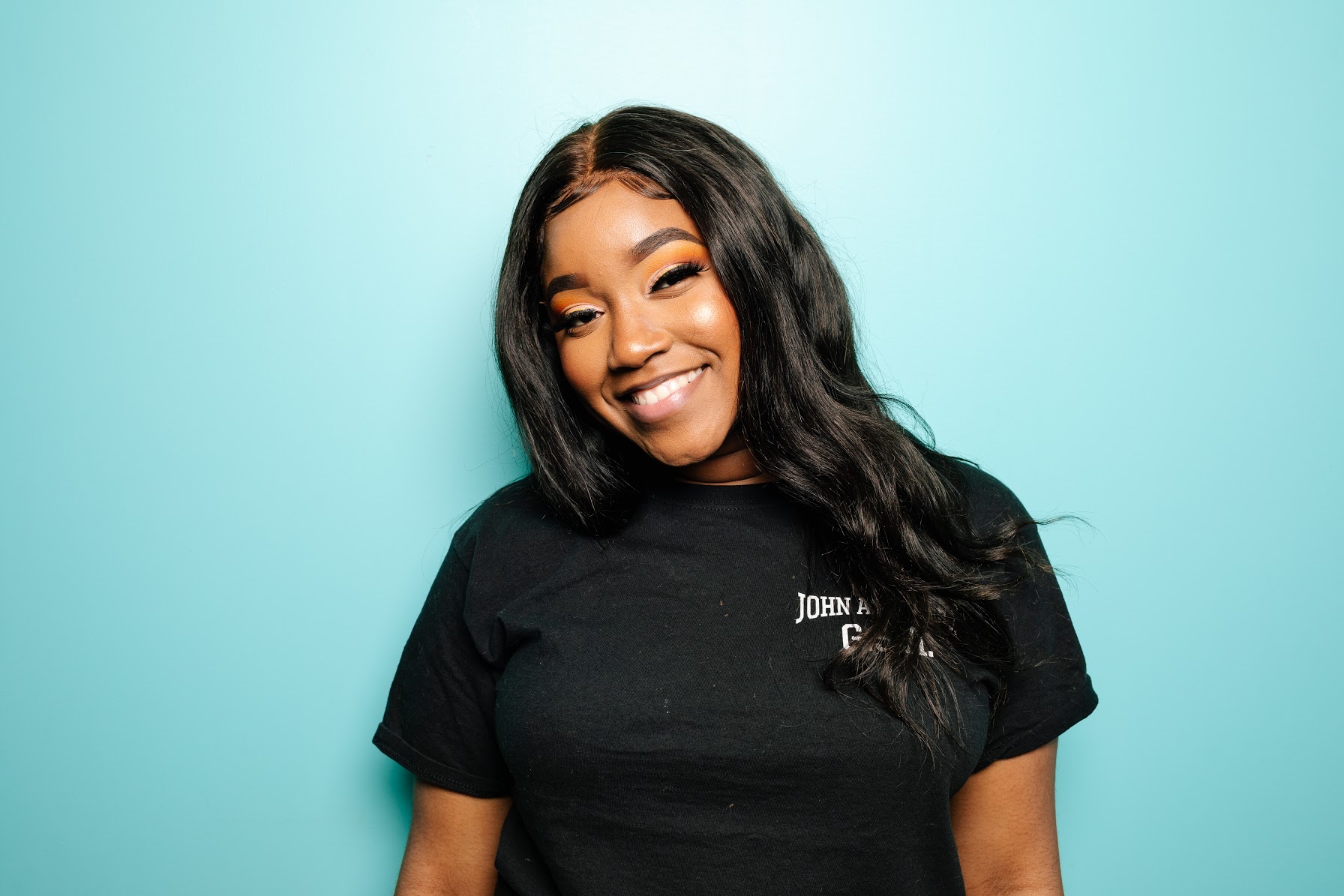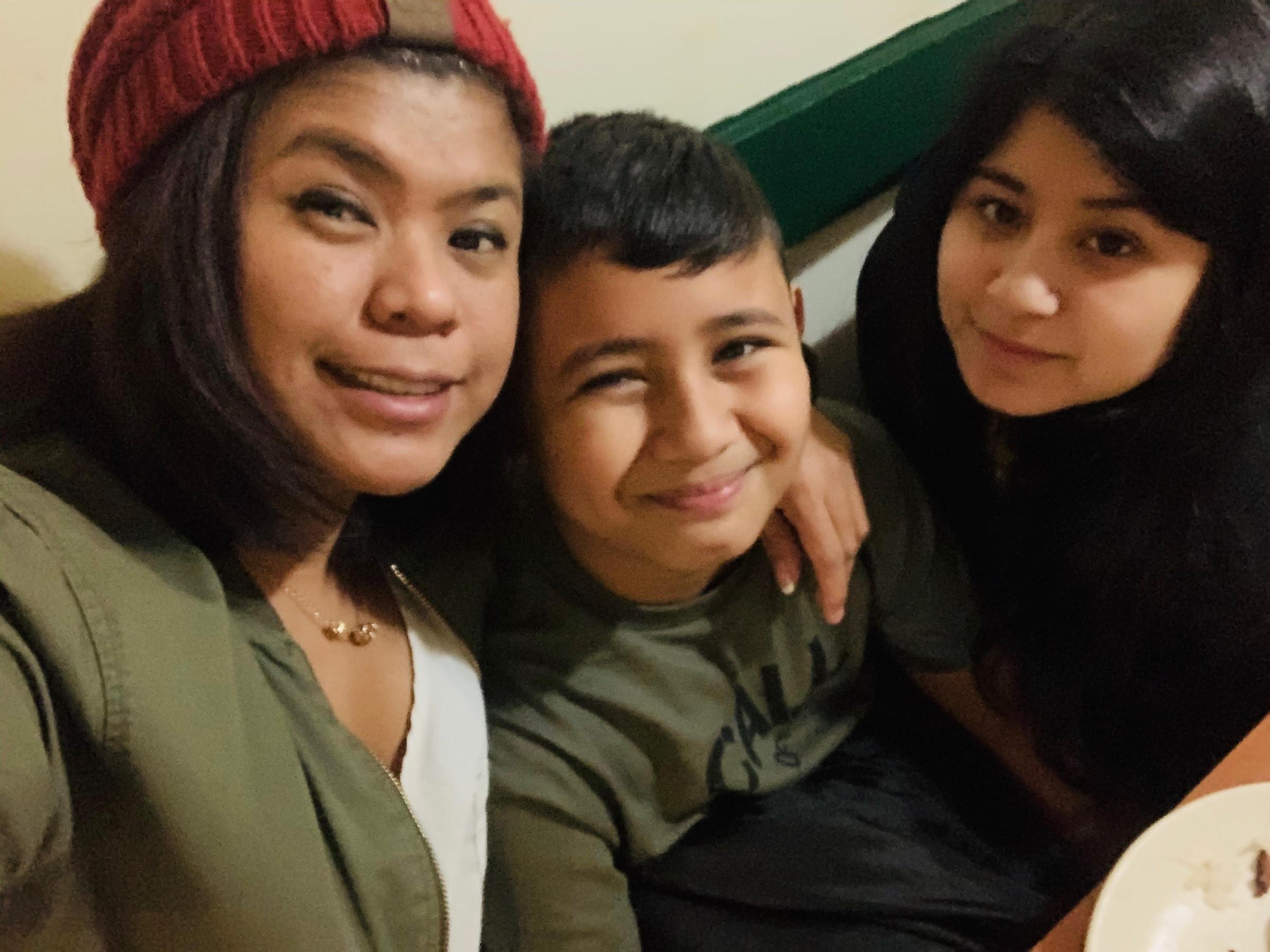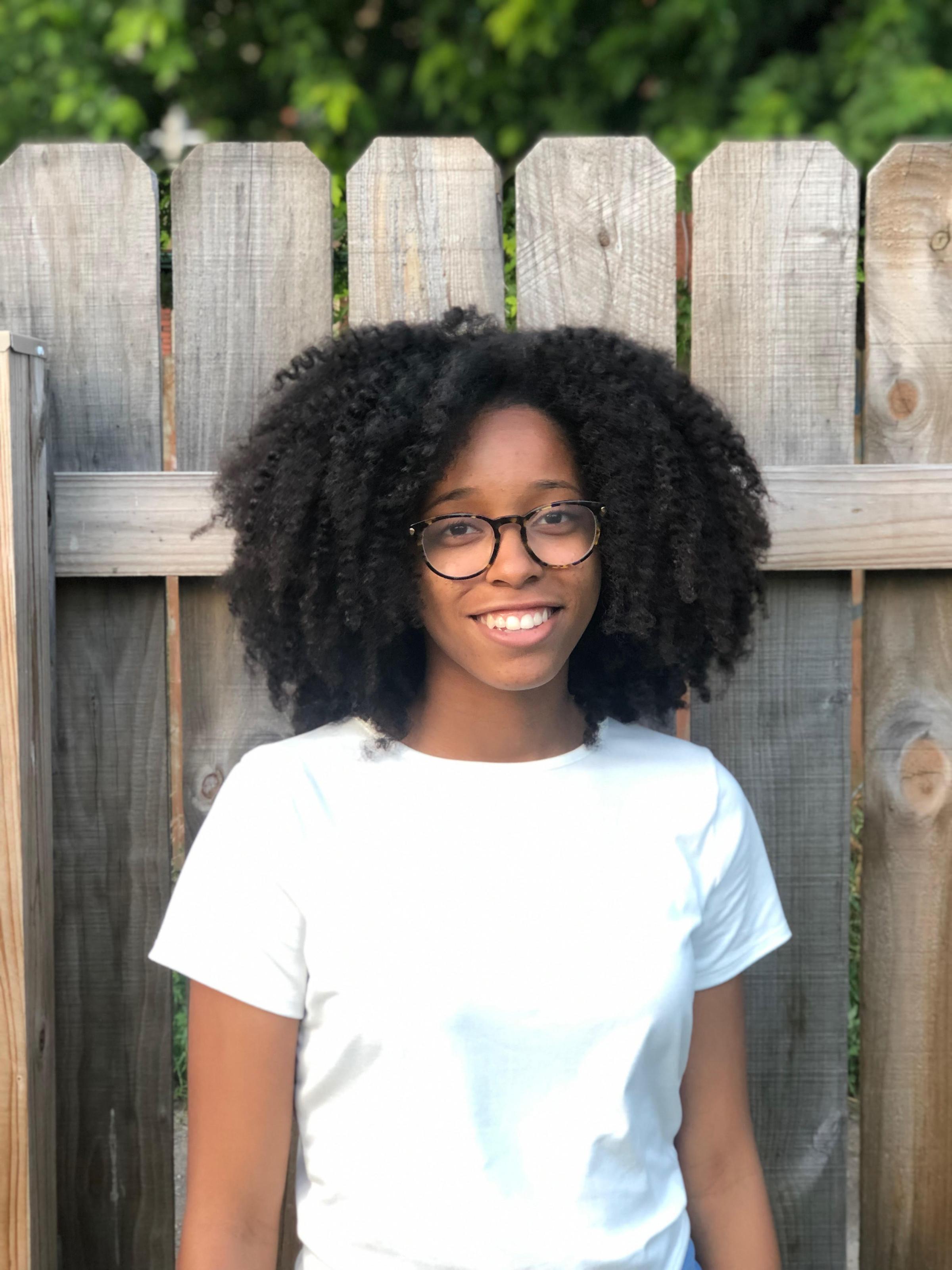
Sue Suilla Daley should have been spending these days designing her graduation cap, picking out a prom dress and roaming the halls of her New York City high school for the last time. Instead, in the epicenter of a pandemic, she has been juggling remote learning and caring for her 5-year-old godsister and 83-year-old grandmother at home, while her mother works as a food and nutrition aide for Mount Sinai hospitals, on the front lines of COVID-19.
“I kind of planned how senior year was going to go for me,” says Daley, 18. “In such a short time, so many things have changed.”
“I wasn’t necessarily prepared for the additional at-home responsibility,” she adds.
As the world grapples with the coronavirus pandemic, millions of students in the U.S. are now learning remotely, removed from the communities and resources they relied on within school buildings. And in the middle of a crisis that could affect them for years to come, many are also dealing with illness or loss of income within their families, or the frequent absence of a parent who is an essential worker, forcing them to take on more demanding roles at home. For those who previously struggled with anxiety or depression, the pandemic has disrupted treatment routines. But it has also posed challenges for teens who did not have mental health issues before.
“They are stressed now because of the lack of structure of school, missing big chunks of their lives—whether it’s dating, graduation, proms, classes—and there’s worry about their parents’ finances and there’s worry about everyone’s health,” says Dr. Harold Koplewicz, an adolescent psychiatrist and president of the Child Mind Institute, a national nonprofit focused on youth mental health.
Koplewicz compares it to the effect that the Sept. 11, 2001 attacks had on young people in the New York area. (One study found that nearly 30% of New York City children had a probable mental health disorder six months after the attacks. Another study found that children whose family members lost jobs because of the attacks were more likely to develop post-traumatic stress disorder and other anxiety disorders.) As the coronavirus affects the entire country and world and has no clear end date, he anticipates a rise in anxiety, acute stress and PTSD among youth.
“All of a sudden, you’re in the middle of something that is no longer like a sprint,” Koplewicz says. “This becomes an endless marathon, and what we worry about is hopelessness.”
In Los Angeles, Peter, a 17-year-old high school junior, has been trying to help his father through the technological hurdles of filing for unemployment, filling out job applications online and setting up Zoom meetings. “It’s just kind of difficult to manage trying to focus on my schoolwork, while also trying to help my parents,” says Peter, who, because he was discussing his family’s financial situation, asked that his surname not be used. His father is among the 30 million workers who have lost their jobs since COVID-19 began sweeping the country. “It gives me a glimpse of what being an adult is like,” Peter says.
On Staten Island, N.Y., high school senior Anahi Ortiz Fierros, 18, has become responsible for helping her 11-year-old sister with school work and translating school information for her parents, who speak primarily Spanish. She had been working at a local Mexican restaurant but had to quit because a coworker contracted COVID-19. Her mother had been employed as a house cleaner until all of her clients cancelled, afraid of the virus. The family now relies entirely on her father, who works at a liquor store. As Ortiz Fierros, who is undocumented, frets about her family’s economic situation, she’s also anxiously awaiting the U.S. Supreme Court’s decision on phasing out the Deferred Action for Childhood Arrivals program, which protects young undocumented immigrants from deportation. “We’re really on edge right now,” she says.
Daley’s days have become a balance between online learning and caregiving. She prioritizes 5-year-old McKenna, whose mother is a live-in home care worker for a client in Manhattan during the week, guiding her through kindergarten lessons about syllables. Then she turns to her own classes: submitting an economics assignment, finishing a history reading and answering discussion questions online, trying to complete the requirements for her International Baccalaureate diploma.
At times, she has emailed her teachers to ask for extensions, explaining, “I’m responsible for XYZ at home, I’m not going to be able to get this done at 3 p.m. today.”

Daley also cooks for her grandmother, helps her get around the house and worries about what she would do if her grandmother became ill. “I honestly have no idea,” she says, “and that’s what scares me the most.”
There is limited data available to indicate how teenagers, in particular, have been affected by the pandemic thus far. But studies show that, though they are less likely to suffer the most severe health effects of COVID-19, young adults are feeling the pandemic’s social and economic impact more acutely than other age groups.
A Pew Research Center survey conducted in late March found that people ages 18 to 29 were more likely than any other age group to experience high psychological distress when thinking about the outbreak. Young people aged 16 to 24 are also disproportionately more likely to face coronavirus-related layoffs because they make up 24% of employment in higher-risk industries, including restaurants, retail and transportation, according to Pew.
“It’s not only older folks being the backbone,” says Emily Aguilar, a 20-year-old living in Chicago who is one of just two people still working in her household of eight. The narrative that only older adults are being hit hard does a disservice “to the young people who aren’t privileged enough to stay at home and watch Netflix and go to online school,” she says.
Moreover, this period of their lives can be a challenge even in the best of times, as the majority of mental health disorders develop by age 24.
“And the unusual part of this pandemic, of COVID-19, is that it affects everyone’s mental health—not only teenagers who have a mental health disorder, but every teenager,” Koplewicz says. “It’s a risky time, and then to make everything more complicated, we add COVID-19. So we add this incredible stressor onto a sensitive brain [at] a developmentally demanding time.”
‘I want to help, but it’s very stressful’
Jovianne Ojeda has tried to stay positive. The 15-year-old high school sophomore is responsible for watching her 11-year-old brother during the day and doing much of the cooking and cleaning. Her single mother—Marianne Ojeda, a certified nursing assistant at a Chicago hospital—works up to 16-hour shifts, six days a week, caring for COVID-19 patients and those presumed to have it.
“It’s a little bit overwhelming, but it kind of gives me strength. I know that I’m helping my mother out a lot, and I’m contributing a lot to this family,” Jovianne says. “But it’s also very hard to take up all this at the same time. I don’t mind doing it because I want to help, but it’s very stressful.”
She guides her brother through fifth-grade lessons on fractions and division, and she works on her own English essay about the role of darkness in a set of short stories. She makes her brother hotdogs and eggs for breakfast or mac and cheese for dinner, when she knows her mom is too tired to cook after a long shift. She worries constantly when she hears stories about healthcare workers contracting COVID-19 on the job. “Sometimes it’s hard to go to sleep, too, because there’s so much on my mind,” Jovianne says

Before the pandemic, she was a regular at her friends’ volleyball games and often stayed in the library after school to finish her homework. She painted on the rare days when she felt stressed. Now, inside all the time, she says she paints almost every day. “It helps me take my mind off what’s happening.”
Marianne Ojeda worries about exposing her children to the virus, but she cannot afford to quit her job. When she comes home, she typically retreats quickly to her bedroom, warning Jovianne and her brother not to come too close, listening to them talk about their day from across the room.
“It’s really difficult. All you want is that hug. You had a rough shift. My son, especially, he’s only 11, and he always wants to tell me something. I’m like, ‘OK, OK, go over there and tell me,'” she says. “‘Just don’t come near me.'”
When they ask her how long this is going to last, she has no clear answer.
“I just want this pandemic to be over, you know,” she says. “Like everybody else at home, I’d like to just stay home with my kids. I feel like I’m neglecting them in some way.”
But she’s proud of her daughter, and grateful for the times when she’s woken up from her mid-day sleep after an overnight shift to find that Jovianne has already made dinner for their family.
“She’s been taking a lot more responsibility for me. I always tell her, ‘Just be with your brother and hug him more for me,'” she says. “I know they miss me.”
In Detroit, where nearly 9,000 COVID-19 cases have overwhelmed hospitals, 17-year-old Brooke Solomon is realizing how much she misses the structure of school and the company of her friends and teachers. “This is the most confused I’ve ever been about life honestly,” she says. “Everything is so up in the air, and I’m not really sure how to manage everything.”
By day, Brooke helps her mother, who works for the Detroit Area Agency on Aging, deliver personal protective equipment to essential workers for Meals on Wheels and other programs serving seniors in their homes. By night, she completes school assignments and studies for the four AP exams that she will take from home next month.
She and her friends have stayed in touch and documented their new normal through a Google Slides presentation, which they’ve titled “The Diaries of Eight Quarantined and Desensitized Teenagers.” They each update the document daily, announcing college acceptances or answering creative writing prompts.

But Brooke says she has also struggled with the distance from her friends. When she received a rejection letter from Georgetown, her “dream school,” friends watched her open the letter over FaceTime. They comforted her by text afterwards, but it wasn’t the same as being together.
And while she’s looking forward to college—hoping to attend Howard University “if there is a fall”— she’s disappointed about missing out on prom and knows her high school graduation will be different than the one she had been envisioning for years.
“I really wanted that. I really wanted my grandmother to see me walk across the stage, and I really wanted to experience prom,” Brooke says. “As a teen, you invest yourself in coming-of-age stories and hope to see yourself in one someday. But it’s definitely gone from, like, the Breakfast Club to some post-apocalyptic movie.”
She’s part of at least one youth-led group that is trying to help teens through that new reality. The COVID Youth Taskforce, formed by activists in the Detroit area, has started weekly mental health sessions over Zoom for any teen who wants to participate and has created a Google form for teens to request help paying for groceries or cell phone bills, to get connected with a tutor or mental health professional, and to request a care package of items ranging from books and stress balls to protective face masks and hand sanitizer.
Daley, the high school senior in New York City, has been using humor as a coping mechanism, finding small comfort in the snarky memes about how the “Class of 2020 is going to have to graduate on FaceTime.”
“The sad reality of it is I might actually miss out,” she says, but she’s taking it one day at a time. “I’m trying to keep a very optimistic outlook.”
More Must-Reads from TIME
- Why Biden Dropped Out
- Ukraine’s Plan to Survive Trump
- The Rise of a New Kind of Parenting Guru
- The Chaos and Commotion of the RNC in Photos
- Why We All Have a Stake in Twisters’ Success
- 8 Eating Habits That Actually Improve Your Sleep
- Welcome to the Noah Lyles Olympics
- Get Our Paris Olympics Newsletter in Your Inbox
Write to Katie Reilly at Katie.Reilly@time.com